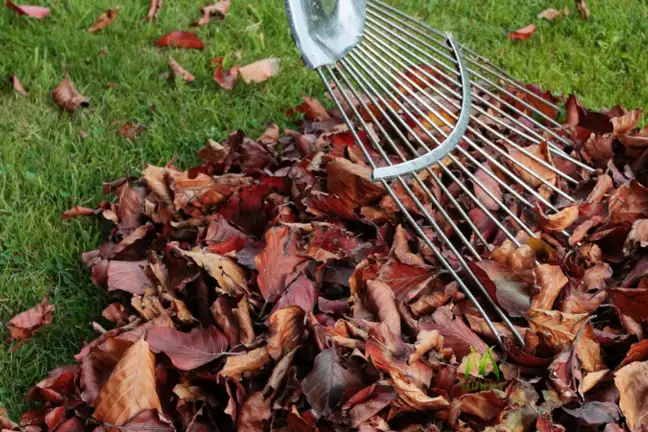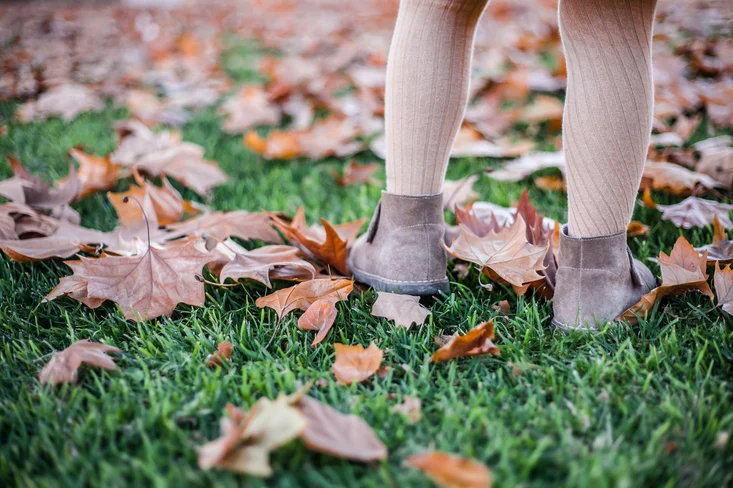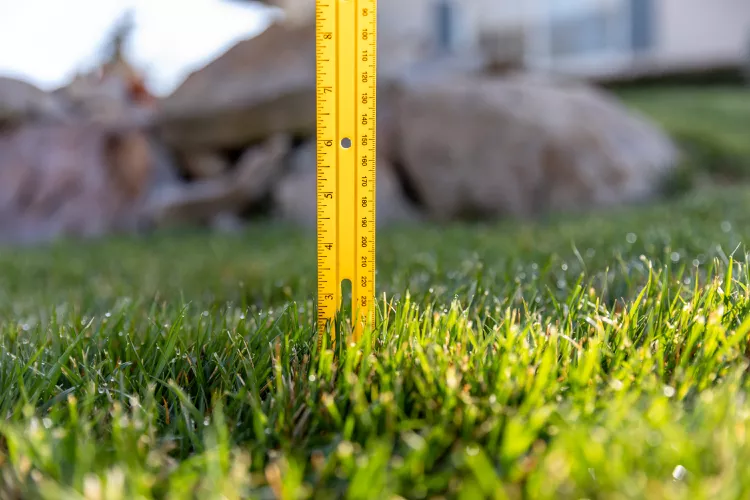How to Protect Lawn Under Snow Cover
Last Updated on October 26, 2025 by Duncan
Snow on grass becomes more hazardous for lawns when it accumulates in huge, compacted mounds over time.
This can cause a number of concerns, including compressing the turf beneath the snow, preventing light from reaching the grass, and creating ideal circumstances for the formation of fungal diseases like snow mold.
To avoid this, you need to take the necessary measures to protect the lawn under snow cover. Some of the things you need to do to protect your lawn include:
Get rid of leaves and debris.
Protecting your lawn from winter damage begins in the fall with lawn winterization. One of the most essential preventative strategies is to keep your grass as clean as possible before the freezing weather arrives.
If your lawn isn’t clean, both cool-season and warm-season grasses will suffer from winter damage. Piles of leaves and other waste can cause havoc on your grass by:
- Suffocating your grass: Debris on the lawn might prevent sunlight and air from reaching your turf.
- Stop new development by strangling your young grass, especially if the leaves mat together.
- Encourage fungal infections like snow mold (particularly the more damaging pink snow mold). This is because falling leaves hold moisture, which fungi like.
- Invite pests like voles, which will munch through your grass and cause winter damage.
If you’ve been keeping up with your fall lawn care, you should have done some fall cleanup already.
You don’t even need to bag your leaves. Mulching and keeping fall leaves on your lawn is one way to repurpose them, and it can benefit your lawn in a variety of ways. Mulching your leaves on your lawn has the following benefits:
- Mulched leaves replenish nutrients and organic materials in your lawn.
- Maple leaves help keep weed seeds from growing.
- Some tree leaves, particularly those of legumes, might increase nitrogen levels on your lawn.
Aerate your lawn in the fall.
Your lawn’s soil might become compacted during the year. While this is undesirable at any time of year, it is most damaging during the winter. You should aerate your lawn in the fall so that your grass can recuperate from this intrusive lawn care method.
Here’s how aeration helps prevent winter lawn damage:
- Allows air, water, and nutrients to access your turf’s roots, providing the building blocks that grass requires to grow strong.
- Allows roots to grow freely. Roots have difficulty pushing through compacted soil. A stronger root system results in a stronger lawn.
- Helps to decrease thatch, which can harbor pests and lawn illnesses. If you have a lot of thatch on your grass, you should dethatch it in addition to aeration.
- Improves air circulation, reducing the chance of snow mold. Snow mold can be a problem on cool-season lawns in snowy areas.
Watch the height of the final cut.
The height of your turf before winter can significantly improve its ability to withstand winter lawn damage.
Cool-season grasses should be trimmed low to avoid snow mold (which occurs more frequently in long, matted grass).
Short grass is also less appealing to voles and other rodents, who will chew their way through your lawn.
Warm-season grasses prefer the same or higher height, which can help prevent winter damage.
How short should you trim your grass to avoid winter damage? It all depends on the type of grass.
You may learn more about this in our post “How Short to Cut Grass Before Winter“.
Fertilize before the first freeze.
Applying fertilizer to your lawn before the first freeze of fall (or winter) may appear counterproductive – after all, the grass will not be growing – but it actually helps prevent winter lawn damage.
While this is the case, you should note that not all fertilizers will get the work done. Winter fertilizer will help your grass the most.
Winter fertilizer is specially created to help with grass winterization. It promotes healthy root formation, resulting in stronger turf. Winter fertilizer also restores nutrients lost during the summer.
To get the ideal results, it is critical to apply the proper fertilizer at the right time.
Potassium-rich fertilizers are especially beneficial to warm-season grasses. Stop applying nitrogen fertilizers 6 to 8 weeks before the first frost to avoid brown patches and winter kill.
Cool-season grasses prefer nitrogen fertilizers. Excess potassium can promote snow mold and other grass diseases. Apply winter fertilizer after the final mowing of the season.
Water your lawn in winter.
If you have been wondering whether you should water your lawn in winter, yes, you should. The reason for this is that grass needs water even in the winter. Snow may preserve moisture in lawns and eventually hydrate the grass when it melts, so if you live in snowy climates, you don’t have to be as concerned.
If you reside in regions with drier, milder winters, you may need to water your lawn. When doing it, you should note that newly planted lawns would require additional irrigation during the winter. So, ensure that you apply it.
How much should you water your grass during the winter? Winter irrigation is only necessary once or twice a month. Only use water when the temperature is 40 degrees Fahrenheit or higher. Before watering your grass, you should check the moisture content of the soil.
What if you reside in a warmer section of the United States that does not receive snow in the winter? Warm-season lawns will require around half an inch of water each week in the winter.
You can use sprinklers to irrigate in warm climates; if you live in a cooler environment and need to winterize your sprinklers, you can water by hand.
Pro tip: If your sprinkler system has already been winterized, water by hand. This is just a concern if you live in a colder area; if you live in warmer climates, you can use sprinklers.
Stay away from the grass.
Grass blades tend to freeze in frigid conditions. Stepping on frozen grass will harm or kill it. Walking on frozen earth might damage your lawn’s roots and new grass.
So, don’t step on your grass unless you have to. Don’t be tempted to cut across your yard and use your walkways instead. Otherwise, when spring arrives, you’ll see brown grass where you used to walk frequently. And you don’t want this, do you?
You should also avoid shoveling or plowing snow from your lawn. Not only does it remove the protective coating of snow, but the act of shoveling itself can damage your delicate turf when the shovel or plow comes into contact with it.
Stake your driveways
If you live in an area that routinely receives blankets of snow in the winter, you may be familiar with the agony of not knowing where the line between your pavement and the grass is.
You don’t have to live that way this winter (or in the future). You can use snow stakes to indicate the edge of your turf.
Snow pegs reduce winter grass damage by clearly indicating where humans and equipment can safely pass while shoveling or plowing snow. Going in blind increases the risk of injuring the grass and sprinkler heads.
Marking the boundaries of your lawn with snow stakes also indicates where it is safe to apply salt or ice melt so that you do not damage your lawn.
Ensure your lawn is draining correctly.
Before snow hits, make sure your yard is well-drained. You don’t want water or melting snow to pool and freeze when the temperature falls below 32 degrees Fahrenheit.
That is a surefire way for your lawn to be affected by crown hydration, a highly destructive cause of winterkill.
You can avoid drainage problems by:
- Removing extra thatch from your grass by dethatching it.
- Aerating your lawn to remove compacted soil.
- Leveling your grass to eliminate small dips where water can pool.
Be cautious when melting ice.
Melting ice is another winter duty for most households. You should exercise caution when removing ice from your lawn.
Salt is a typical ice melt that can damage your grass by turning the soil salty. Plants like grass cannot usually thrive in salty soil; even plants that can withstand salt will perish if there is too much of it in the ground.
You can prevent your lawn from winter harm by using these ice-melting alternatives:
- Sand Coffee grounds
- Beet Juice
- A wide range of ingredients, such as wood ash, rubbing alcohol (for a DIY ice melt with dish soap).


